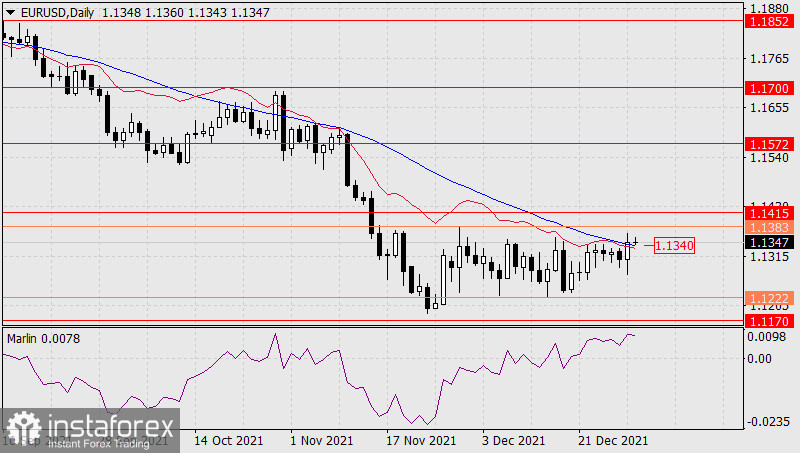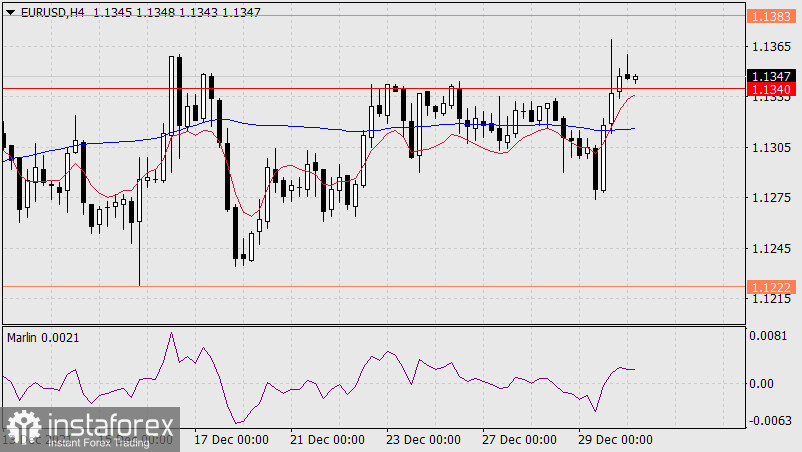Yesterday the euro traded in a range of more than 90 points, overcoming the resistance of the balance and MACD indicator lines at the end of the day. An unpleasant surprise did take place.

But we are in no hurry to announce that the price will mark near any bullish target level, and here the nearest target is 1.1415. The signal line of the Marlin Oscillator can turn down, and the price can just as easily return to yesterday's low. The reason for this will be the fact that the euro grew without a pronounced risk appetite in adjacent markets. US stocks showed mixed closings. US government bonds have undergone sales, but this trend has been going on for ten days and raises new questions - where does the money go from the US market? There is no answer to this question yet. The Treasury is rapidly increasing its debt and formally this should keep the demand for the dollar. The current debt is 29.443 trillion dollars. In the end, the euro has been moving sideways for a month, and until the price breaks out of this sideways side (1.1222-1.1383), it is too early to link the euro's movements with external events.

On the four-hour chart, the indicator of the Marlin Oscillator moves horizontally, the price periodically goes above and below the line. The Marlin Oscillator is also in a wide-range sideways trend, at the moment it shows an intention to turn down from the positive area.
So, yesterday's rise in prices showed the uncertainty of the euro. And no one knows when it will end. January and February can be challenging geopolitically.





















